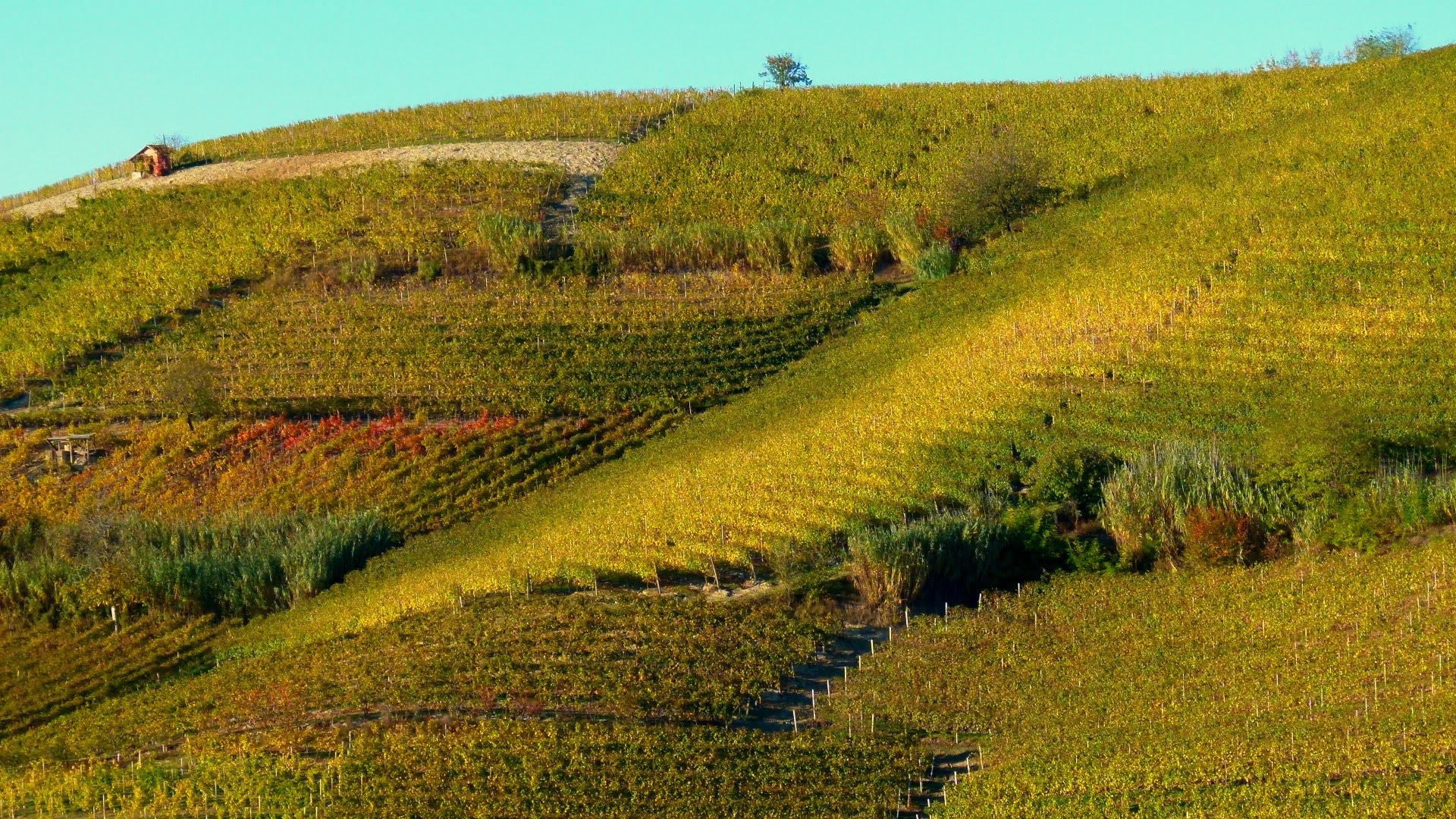Setting up a vineyard requires a series of steps for working the soil to ensure that the vines can take root, grow healthily and flourish. It also requires a process of creating the structure to support the vines.
Vines prefer loose, well drained soil, which enables the roots to penetrate deeply. It is therefore essential to analyse the chemical and physical properties of the soil, in order to:
- collect valuable data on its composition;
- choose the best basal fertilizer;
- detect any presence of nematodes, which can spread viruses to the roots of new plants;
- identify the best type of irrigation system to install.
SOIL PREPARATION
Having good soil and planting the vineyard correctly are two key factors for growing healthy vines. There are a few important steps to be taken to prepare the ground as well as possible.
Uprooting
If you are replanting, the first thing you need to do is completely eradicate the old vineyard, removing both the roots of the plants and the materials used for the supporting structure (posts, wires and accessories). It is particularly important to dig deep to remove all trace of the old roots, as these could be a vehicle for fungi, viruses and toxins that would be detrimental to the health and growth of the new young plants.
Breaking up the soil
The whole area to be cultivated needs to be worked and broken up, to a depth of approx. 80‐120cm, to improve the soil’s drainage and porosity.
Stone clearing
The soil may contain large stones that can obstruct precision planting, as is required for vineyards. Stone clearing leaves the soil more homogeneous and easier to work, and means that the posts can be positioned more precisely.
Basal Fertilizer Application (Broadcasting at, or before sowing, planting)
The preliminary chemical and physical analysis of the soil will identify any nutrient deficiencies that need to be corrected. Fertilizer encourages and optimises the synergy established between the vine and the soil and modifies the properties of the land to support the growth and development of the plants as far as possible. Basal fertilizer provides the soil with phosphorous, nitrogen and potassium, which have an effect on the growth of the vine, the ripeness of the fruit and the aroma of the wine.
THE STEPS INVOLVED IN SETTING UP A VINEYARD
Once you have prepared the soil, you can proceed to set up the vineyard, which should follow a precise series of steps. These are briefly described below.
Squaring and staking out
These are the two preliminary procedures for creating a vineyard. Squaring is used to set the limits for planting and to make sure that the posts and plants are perfectly aligned. It’s important to take into consideration the areas required for manoeuvring machinery in order to obtain the most productive use of space and position the plants and posts at the best possible distances.
Once the rows have been defined you can proceed with the staking: poles are used to indicate the exact points at which the vines will be planted out and you can therefore count the number of vine shoots and posts required to construct the vineyard.
Anchoring
For a stable and secure vineyard, you need to secure anchors at the end of the rows. The entire length of the anchor is screwed into the ground, making sure you that you only leave the top part with the hole on the surface, this allows the wire to pass through and then be secured to the top of the end post.
Installing the posts
The posts are positioned with an auger at the points identified during the staking process. The end posts are the ones that will be secured to the anchors at the end of the rows, whereas the intermediate posts are installed on the inside of the rows.
Choosing your wires It’s important to choose:
- a supporting wire (approx. 3.50mm in diameter) to be installed at approx. 80‐100cm above the ground, to support the bunches of grapes. For example, Galvafort supporting wire, 3.50mm diameter, or Galvatec 3.00mm or Galvatec T‐100 2.70mm.
- a wire for supporting vine shoots, of a smaller diameter (2.7 or 2.2mm) to contain the plants. For example, Galvafort 2.70mm, or Galvatec 2.40mm or Galvatec T‐100 2.20mm.
It’s essential to choose high quality wires to guarantee the stability and sturdiness of the whole vine.
Our catalogue contains three types of wire designed specifically for vineyard installation.
Galvafort
Heavily galvanized steel wire supplied in both standard or pattern laid coils of selected weight. Galvafort zinc coating is far superior to the minimum thickness required by European standards. The coat is clean, homogeneous and uniform, and constitutes a double barrier, both physical and electrochemical, against oxidation.
Discover more >>Galvatec
High carbon content steel wire, with coating in zinc (95%) and aluminum (5%) alloy. Galvatec wire effectively addresses the needs of modern vineyards and fruit orchards, as it is subject to less than 10% elongation, maintaining its mechanical characteristics unaltered for the entire lifespan of the vineyard, even more than 30 years, drastically reducing required maintenance.
Discover more >>Galvatec T100
Galvatec T100 is the evolution of Galvatec wire, and presents a series of additional advantages, including, for example, lower elongation (max 5%), an higher tensile strength and more resistance to stress. Galvatec T100 is the most effective of the alternatives to stainless steel wire, as it also boasts an excellent price/quality relationship.
Discover more >>Laying the wires
Once you have made the holes in the ground for the vine shoots, you can then lay the wires. To create a robust structure you need to pull the wires taut, a fairly tricky and time‐consuming operation. At Cavatorta we have designed Max Tensor, a system that makes the process of tensioning, stretching and joining vineyard wires quicker and easier. With Max Tensor, you can save up to 70% of the time required by conventional systems for assembling vineyard trellising.
